Somaliland |
|
|
|
| Übersicht – Contents: | |
Diese Seite ist Teil des Projektes
Somaliland |
|
|
|
| Übersicht – Contents: | |
Flagge – Flag: |
|
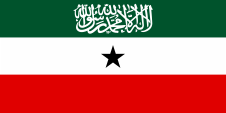  |
Nationalflagge |
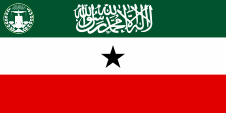  |
Flagge des Präsidenten |
historische Flaggen – historical Flags: |
|
| Britisch-Somaliland – British Somaliland: | |
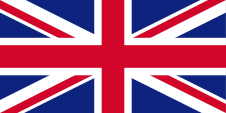 |
1884–1960, Union Flag → quasi Nationalflagge, |
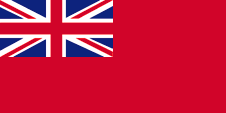 |
1884–1960, |
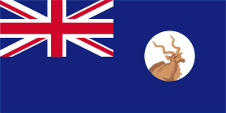 |
1903–1950, Flagge der Regierung (Staatsflagge) – flag of the government (state flag), Seitenverhältnis – ratio = 1:2, Quelle/Source, nach/by: Flags of the World   |
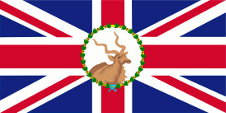 |
1903–1950, Flagge des Gouverneurs – flag of the Governor, Seitenverhältnis – ratio = 1:2, Quelle/Source, nach/by: Flags of the World   |
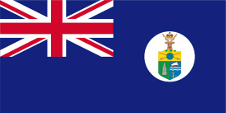 |
1950–1960, Flagge der Regierung (Staatsflagge) – flag of the government (state flag), Seitenverhältnis – ratio = 1:2, Quelle/Source, nach/by: Flags of the World   |
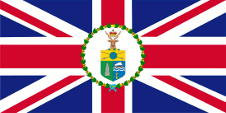 |
1950–1960, Flagge des Gouverneurs – flag of the Governor, Seitenverhältnis – ratio = 1:2, Quelle/Source, nach/by: Flags of the World   |
| Republik Somaliland – Republic of Somaliland: | |
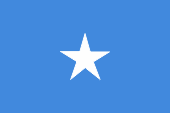 |
26.06.1960–01.07.1960, Nationalflagge – national flag, Seitenverhältnis – ratio = 2:3, Quelle/Source, nach/by: Flaggen und Wappen der Welt   |
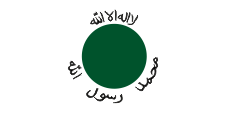 |
1991–1996, Nationalflagge – national flag, Seitenverhältnis – ratio = 1:2, Quelle/Source, nach/by: Flags of the World   |
| Die heutige Flagge von Somaliland wurde am 14.10.1996 eingeführt. Sie zeigt drei waagrerechte Streifen in Grün, Weiß und Rot, ferner im grünen Streifen in weiß die "Schahada" und im weißen Streifen einen schwarzen fünfzackigen Stern. Der Artikel 7 der Verfassung der Republik Somaliland aus dem Jahr 2001 regelt das Aussehen der Flagge, erwähnt dabei unter anderem die Farben Grün und Rot, die allerdings nicht weiter spezifiziert werden. | The
today’s flag of Somaliland was introduced on 14th of October in 1996. It shows three horizontal stripes in green, white and red, furthermore in the green stripe in white the "Shahada" and in the white stripe a black five-pointed star. Article 7 of the Constitution of the Republic of Somaliland of 2001 regulates the appearance of the flag, mentioning among other things the colours green and red, which, however, are not specified further. |
| Die Schahada ist das Bekenntniswort des Islam ("Allah il Allah, wa Muhammad rasul Allah" → "Es gibt keinen Gott ausgenommen den Gott; Mohammed ist Allahs Gesandter"). Der schwarze Stern ist wahrscheinlich der "Leitstern der afrikanischen Freiheit", so wie er oft auf afrikanischen Flaggen zu sehen ist. | The
Shahada is the confessional credo of the Islam ("Allah il Allah, wa Muhammad
rasul Allah" → "There is no God but God; and Mohammed is His messenger"). The black star is the "lead-star of the african freedom", like he is often to see on African flags. |
| Zur Bedeutung der Farben ist nichts bekannt. Die Farben Rot, Grün und Weiß sind offenbar von zentraler Bedeutung für das somalische Volk, denn die Farben tauchen auf Somalischen Flaggen immer wieder auf (Ogaden, WSLF, SPM Jubaland, Südwestsomalia). Grün steht auf Grund der Verbindung mit der Schahada wahrscheinlich auch für den Islam. | About the meaning of the colours is nothing known. The colours red, green and white are obviously from pivotal significance for the Somali people, because the colours arise on Somali flags again and again (Ogaden, WSLF, SPM Jubaland, Southwest Somalia). Green stands because of the combination with the Shahada probably also for the Islam. |
| Als Somaliland sich am 18.05.1991 von Somalia trennte, nahm es eine weiße Flagge an, die in der Mitte eine grüne Scheibe zeigte, umgeben von arabischen Schriftzeichen. Die Flagge wurde bis zur Einführung der heutige Flagge am 14.10.1996 verwendet. | As Somaliland separated itself from Somalia on 18th of May in 1991 was adoped a white flag which showed in the middle a green disk surrounded by Arabian letters. This flag was in use until the introduction of the today’s flag on 14th of October in 1996. |
| Als Somaliland am 26.06.1960 von Großbritannien unabhängig wurde, übernahm es die Flagge von Italienisch-Somaliland. Die Flagge zeigte ein einfarbiges hellblaues Grundtuch mit einen weißen fünfzackigen Stern in der Mitte. | As Somaliland became independent from United Kingdom on 26th of June in 1960 it was taken over the flag of Italian Somaliland. This flag showed a single-coloured pale blue bunting with a white five-pointed star in the middle. |
| Britisch-Somaliland entstand 1887, nachdem die Briten im Ägyptischen Somaliland im Februar 1884 die Macht übernommen hatten, Ägypten war 1882 von Großbritannien erobert worden, unterstand aber zunächst von Aden aus der Verwaltung von Britisch-Indien. Im Jahre 1903 erhielt Britisch-Somaliland eine eigene Verwaltung und somit einen eigenen Gouverneur. Damit hatte die britische Verwaltung der Kolonie das Recht einen eigenen sogenannten "Blue Ensign" zu verwenden, ein dunkelblaues Flaggentuch mit einer Flaggendarstellung – dem britischen Union Jack – in der Oberecke mit einem Abzeichen im wehenden Ende. Für alle anderen Zwecke war bis dato an Land ausschließlich der britische Union Jack zu verwenden und zur See die übliche rote britische Handelsflagge, der "Red Ensign". |
British Somaliland came
into being in 1887 after the British had taken power in Egyptian Somaliland
in February 1884. Egypt had been conquered by United Kingdom in 1882, but was
initially under the administration of British India from Aden. In 1903, British Somaliland received its own administration and thus its own governor. This gave the British administration of the colony the right to use its own so-called "Blue Ensign", a dark blue flag bunting with a representation of a flag - the British Union Jack - in the upper corner, with a badge in the waving end. For all other purposes, only the British Union Jack was to be used on land and the usual red British merchant flag, the "Red Ensign", was to be used at sea. |
Großbritannien hatte in Jahr 1864 ein Flaggensystem eingeführt, in dem:
Seit 1865 durften
Schiffe von Kolonialregierungen einen Blue Ensign mit einem Badge
(Abzeichen) im fliegenden Ende führen. |
United Kingdom introduced a flag system in 1864 in which:
Since 1865 ships of colonial governments were permitted to fly the Blue Ensign with a badge in the flying end of the flag. The governments were asked to design appropriate badges. |
| Das 1903 eingeführte Emblem (Badge) zeigte eine Kudu-Antilope auf einer weißen Scheibe. Im Jahre 1950 wurde ein neues Badge eingeführt. | The in
1903 introduced emblem (badge) showed a Kudu antelope within a white disk. In 1950 was introduced a
new badge. |
| Quelle/Source: Die Welt der Flaggen, Flaggen und Wappen der Welt, Wikipedia (EN), Flags of the World, Volker Preuß | |
| Wappen – Coat of arms: | |
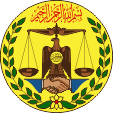 |
seit/since 1996, Das Wappen von Somaliland – coat of arms of Somaliland, Quelle/Source: Wikipedia (EN), Abdullahi Abdi Omar (Jawaan), Public domain, via Wikimedia Commons |
 |
1903–1950, Emblem (Badge) von Britisch-Somaliland – Badge of British Somaliland, Quelle/Source, nach by: Flags of the World |
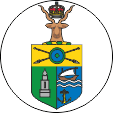 |
1950–1960, Emblem (Badge) von Britisch-Somaliland – Badge of British Somaliland, Quelle/Source, nach by: Flags of the World |
| Das Wappen von Somaliland ist ein golden tingiertes, rundes Siegel. Darin ein stilisierter Kranz aus grünen Zweigen, zwei Hände beim Händeschütteln, eine Waage und ein Adler und darüber ein islamischer Sinnspruch in Rot. Das Wappen ist ein Sinnbild des Staatsmottos. Dieses lautet: "Gerechtigkeit, Frieden, Freiheit, Demokratie und Erfolg für alle" |
The coat of arms of Somaliland is a golden coloured round
seal. In it a stylized wreath from green twigs, two hands in handshaking, a
libra and an eagle and an Islamic motto above it in red. The coat of arms is an allegory of the motto of the state. That is: "justice, peace, freedom, democracy and success for all" |
| Britisch-Somaliland hatte ab 1903 eine eigene Verwaltung, so dass hier ab 1903 ein eigenes Abzeichen (Badge) verwendet wurde. Es war eine weiße Scheibe mit einer Kudu-Antilope darauf. 1950 war ein reguläres Wappen eingeführt worden, das nun anstelle der Antilope im Badge erschien. |
British Somaliland had
its own administration from 1903, so its own badge was used here from 1903.
It was a white disc with a Kudu Antelope on it. In 1950, a regular coat of arms had been introduced, which now appeared in the badge instead of the antelope. |
| Das Badge zeigte auf einer weißen Scheibe einen Schild, in dessen Schildhaupt zwei gekreuzte Somali-Speere und ein Somali-Schild zu sehen waren. Das gespaltene Schild zeigte rechts eine arabische Dhau (Segelschiff mit einem Segel) stilisierte Wellen und einen Anker, ein Hinweis auf die Gründung des Landes durch Händler und Seefahrer. In der linken Hälfte des Schildes das "Silberne Minarett", den Turm der Hauptmoschee in Hargeisa, und oberhalb des Schildes den Kopf einer Kudu-Antilope mit der britischen Krone zwischen den Hörnern. |
The badge showed on a white disk a shield and in its head were to see
two crossed Somali spears and a Somali shield.
The vertically divided shield showed on the one side an arabian dhau (sailing ship with one sail) stylized waves and one anchor, a hint for the establishment of the country by traders and seafarers. In the other side of the shield is to see the "Silvery Minaret", the tower of the main mosque in Hargeisa, and above the shield the head of an Kudu Antelope with the British crown between the horns. |
| Quelle/Source: Wikipedia (EN), Volker Preuß | |
Landkarte – Map: |
Das Horn von Afrika, 2012 – The Horn of Africa, 2012: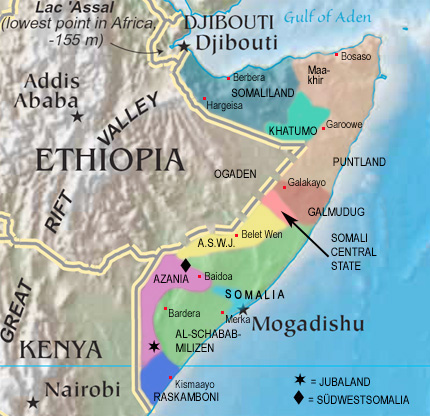 Quelle/Source: Freeware, University of Texas Libraries, modyfied by: Volker Preuß |
Das Horn von Afrika, 2023 – The Horn of Africa, 2023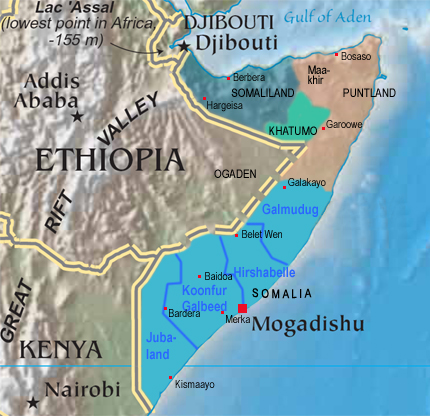 Quelle/Source: Freeware, University of Texas Libraries, modyfied by: Volker Preuß |
|
|
| Zahlen und Fakten – Numbers and Facts: | |
|
|
|
|
|
|
|
|
|
|
|
|
|
|
|
|
| Antike ·
Handel zwischen den Somali aus Punt und Ägypten, später auch mit dem
Römischen Reich, das heutige Somaliland gehört zum Aksumitischen Reich 7. Jahrhundert · an der Küste erste Kontakte mit dem Islam, Gründung von Zeila, Ifat und Hadja durch arabische Händler aus Jemen, Herausbildung von islamischen Stadtstaaten, Islamisierung 13. Jahrhundert · Zeila wird in Somaliland zum wichtigsten und mächtigsten Staat 1526 · Eroberung Somalilands durch das Reich Adal 1548 · Eroberung Somalilands durch das Osmanische Reich 1630 · Somaliland kommt unter die Herrschaft der Scherifen von Mekka (Hedschas), Osmanische Oberhoheit 1830 · Osmanische Oberhoheit unter der Herrschaft erblicher Gouverneure 07.09.1877 · Somaliland kommt unter die Herschaft Ägyptens, Osmanische Oberhoheit Februar 1884 · Großbritannien übernimmt die Herrschaft im ehemals Ägyptischen Somaliland (1882 britische Eroberung Ägyptens) 20.07.1887 · Bildung der Kolonie Britisch-Somaliland, Unterstellung unter die Verwaltung durch den britischen Gouverneur in Aden 1899–1920 · großer antikolonialer Aufstand unter Mullah Hadj Muhammad ibn Abdullah Hasan 1903 · Britisch-Somaliland erhält einen eigenen Gouverneur 19.08.1940–16.03.1941 · Zweiter Weltkrieg (1939-1945), Besetzung durch Italienische Truppen 26.06.1960 · Großbritannien gewährt Somaliland die Unabhängigkeit unter Ministerpräsident Mohammed Haji Ibrahim Egal 01.07.1960 · Vereinigung des ehemaligen Italienisch-Somaliland mit dem ehemaligen Britisch-Somaliland zur Republik Somalia 1988 · die Somaliland Nationalbewegung (Somaliland Nationalist Movement, SNM) beginnt den bewaffneten Kampf gegen die Somalische Zentralregierung unter General Siyad Mohammed Barre 18.05.1991 · Somaliland trennt sich von Somalia 24.05.1991 · Proklamation der Republik Somaliland unter Präsident Abd-ar-Rahman Ahmad Ali Tur, dem Chef der SNM 1993 · Wahl von Mohammed Haji Ibrahim Egal zum Präsidenten 1997 · Verfassung 03.05.2002 · Tod des Präsidenten Mohammed Haji Ibrahim Egal, Nachfolger wird Dahir Riyale Kahin 2004 · Tod von Abd-ar-Rahman Ahmad Ali Tur 2007 · Abspaltung des Staates Maakhir im Osten des Landes 2009 · Maakhir erklärt seinen Anschluss an Puntland 2012 · in Osten bildet sich der Staat Khatumo 2017 · der Staat Khatumo löst sich wieder auf 2023 · der Staat Khatumo bildet sich erneut, es kommt zu Kämpfen mit der Armee Somalilands |
| antiquity
· trade between the Somali from Punt and Egypt, later also with the Roman
Empire, the today’s Somaliland belongs to the Aksumit Empire 7th century · first contacts with the Islam at the coast, foundation of Zeila, Ifat and Hadja by Arabian traders from Yemen, evolution of islamic of town-states, islamization 13. Jahrhundert · Zeila becomes in Somaliland to the most important and most powerful state 1526 · conquest of Somaliland by the Empire of Adal 1548 · conquest of Somaliland by the Ottoman Empire 1630 · Somaliland comes under the reign of the Sherifs of Makkah (Hedjas), Ottoman supremacy 1830 · Ottoman supremacy under the rule of hereditary governors 7th of September 1877 · Somaliland comes under the rule of Egypt, Ottoman supremacy February 1884 · United Kingdom takes over the rule in the former Egyptian Somaliland (1882 British conquest of Egypt) 20th of July 1887 · formation of the colony British-Somaliland, subordination under the administration of the British governor in Aden 1899–1920 · big anti-colonial revolt under Mullah Hadj Muhammad ibn Abdullah Hasan 1903 · British-Somaliland gets an own governor 19th of August 1940–16th of March 1941 · Second World War (1939-1945), occupation by Italian troops 26th of June 1960 · United Kingdom grants Somaliland independence under Premier Mohammed Haji Ibrahim Egal 1st of July 1960 · unification of the former Italian Somaliland with the former British Somaliland to the Republic of Somalia 1988 · the Somaliland Nationalist Movement (SNM) starts the armed struggle against the Somali central government under General Siyad Mohammed Barre 18th of May 1991 · Somaliland separates from Somalia 24th of May 1991 · proclamation of the Republic of Somaliland under President Abd-ar-Rahman Ahmad Ali Tur, the chief of the SNM 1993 · election of Mohammed Haji Ibrahim Egal to president 1997 · constitution 3rd of May 2002 · death of President Mohammed Haji Ibrahim Egal, successor is Dahir Riyale Kahin 2004 · death of Abd-ar-Rahman Ahmad Ali Tur 2007 · separation of the Maakhir State in the east of the country 2009 · Maakhir declares its annexation to Puntland 2012 · the State of Khatumo is formed in the east 2017 · the Khatumo State dissolves 2023 · the Khatumo State forms again, fighting breaks out with the Somaliland army |
| Quelle/Source: Atlas zur Geschichte, Wikipedia (DE), World Statesmen |
| Der Name "Somaliland" geht auf den Namen der ehemaligen Kolonie Britisch-Somaliand zurück und leitet sich von seinen Bewohnern ab. Diese nennen sich "Somali", was übersetzt angeblich "die Gastfreundlichen" heißt. In Somali bedeuten die Worte "soo mal" soviel wie "geh und melke", evtl. als Einladung zum Milchtrinken gemeint, was vielleicht die Erklärung für die unterstellte Gastfreundschaft liefert. Man kann sich gut vorstellen, wie ein fremder Reisender mit dem Schiff an der Küste landet, einen Einheimischen trifft, der in Richtung seiner Behausung zeigt und "soo mal" ruft, und der Gast des Geste als Benennung des Landes umdeutet. Andererseits bedeutet das Wort "somal" in den Kuschitischen Sprachen am Horn von Afrika, zu denen auch das Somalische zählt, "dunkel" oder "schwarz", was sich vielleicht auf die sehr dunkle Hautfarbe einiger Somalis bezieht. Auf Arabisch steht das Wort "zamla" für "Vieh". |
The name "Somaliland" has its roots in the name of the former colony British
Somaliland and its inhabitants. They call themselves "Somali", which supposedly translates as "the hospitable".
In Somali, the words "soo mal" mean something like "go and milk", possibly meant as an invitation to drink milk, which perhaps provides the explanation for the assumed hospitality. One can well imagine a foreign traveller landing by ship on the coast, meeting a local who points in the direction of his dwelling and calls out "soo mal", and the guest reinterpreting the gesture as naming the country. On the other hand, in the Cushitic languages of the Horn of Africa, which include Somali, the word "somal" means "dark" or "black", perhaps referring to the very dark skin colour of some Somalis. In Arabic, the word "zamla" means "cattle". |
| Quelle/Source: Atlas der wahren Namen, Handbuch der geographischen Namen, Volker Preuß | |